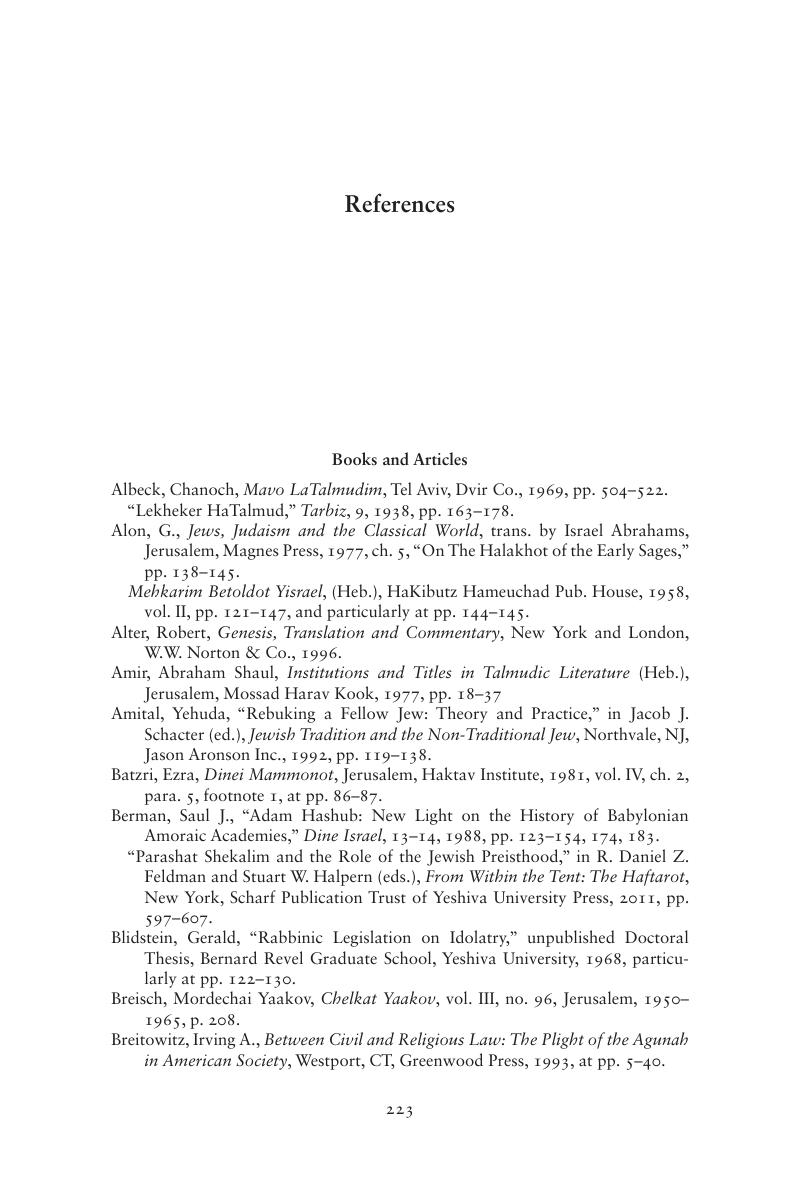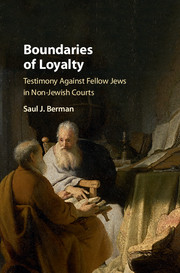Book contents
- Boundaries of Loyalty
- Boundaries of Loyalty
- Copyright page
- Dedication
- Contents
- Book part
- Introduction
- 1 The Use of Non-Jewish Courts: The Tannaitic Period
- 2 Legislative Constraint on Testimony: The Amoraic Period
- 3 Rejected Rationales for Testimonial Restriction: The Gaonic Period into the Period of the Rishonim
- 4 The Creation of a Duty to Testify Against Fellow Jews in Non-Jewish Courts: The Period of the Rishonim
- 5 The Tension Between Responsa and Codification – Maharam Mintz, Rabbi Joseph Karo and Rabbi Moshe Isserlis
- 6 Further Expansion of the Duty of Testimony Against Fellow Jews in Non-Jewish Courts in the Period of the Acharonim
- 7 Contemporary Attempts to Revert to the Original Law of Rava
- 8 Conclusion: Reflections on Loyalty and Law
- References
- Index
- References
References
Published online by Cambridge University Press: 27 October 2016
- Boundaries of Loyalty
- Boundaries of Loyalty
- Copyright page
- Dedication
- Contents
- Book part
- Introduction
- 1 The Use of Non-Jewish Courts: The Tannaitic Period
- 2 Legislative Constraint on Testimony: The Amoraic Period
- 3 Rejected Rationales for Testimonial Restriction: The Gaonic Period into the Period of the Rishonim
- 4 The Creation of a Duty to Testify Against Fellow Jews in Non-Jewish Courts: The Period of the Rishonim
- 5 The Tension Between Responsa and Codification – Maharam Mintz, Rabbi Joseph Karo and Rabbi Moshe Isserlis
- 6 Further Expansion of the Duty of Testimony Against Fellow Jews in Non-Jewish Courts in the Period of the Acharonim
- 7 Contemporary Attempts to Revert to the Original Law of Rava
- 8 Conclusion: Reflections on Loyalty and Law
- References
- Index
- References
Summary

- Type
- Chapter
- Information
- Boundaries of LoyaltyTestimony against Fellow Jews in Non-Jewish Courts, pp. 223 - 230Publisher: Cambridge University PressPrint publication year: 2016



